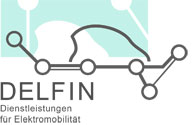“The land of the motor car […] has been painfully slow to embrace electric vehicles. The cost and weight of such cars, together with concerns over their range and performance, has left Germans firmly wedded to the combustion engine […]” (Handelsblatt, June 2015). Will electric cars ever achieve the same popularity as diesel- or petrol-driven cars? The German government plans to accelerate e-mobility’s market penetration by providing more money for R&D and by supporting the installation of a more comprehensive charging network. Promoting technical advances is an excellent way of fostering electric mobility. But how can companies themselves foster and benefit from electric mobility? And what kinds of companies are we talking about – car manufacturers, component suppliers, energy providers, transport authorities, IT start-ups? Putting aside efforts to upgrade cars and install charging stations, the e-mobility market is turning out to be crucial for far more companies than probably anyone could have foreseen.
It’s about heroes and little helpers (not magic bullets)
Average Germans would probably say that the heroes of electric mobility are the cars (or perhaps the manufacturers – but it’s the cars we actually love). The feeling is that as soon as they are as “good” as their fossil-fueled brothers, they will simply sell themselves. And it’s taken for granted that they’ll eventually replace the grandfathers of German engineering (now seen as “diesel dinosaurs” and “gas guzzlers”). The question is how can companies avoid getting stuck in the muck and do more than just jump on the bandwagon? How do they become early adopters, or, better still, innovators? Will services help e-mobility overcome its current gridlock? It would be going too far to claim that services are the magic bullet for success, but they just might prove to be those little helpers that are needed in every heroic tale.
Why a service-dominant view will help promote electric mobility
Is a good service simply fast, cheap and convenient – or does there have to be more to it to make a business successful? Services might be the most underestimated but effective tool with which to build up electric mobility and integrate electric vehicles into existing mobility habits. From a practitioner’s point of view, services are a way to balance out the perceived drawbacks of technical products – in this case electric cars. These drawbacks may include long charging times, high prices (in comparison to cars with an internal combustion engine), limited range and a still inadequate charging system. The current technical shortcomings provide numerous service opportunities and therefore new business models that can incorporate e-mobility services.
Success factors for crafting and launching e-mobility services
According to an expert study (published in German) carried out by Fraunhofer IAO, the Karlsruhe Service Research Institute (KSRI) and FIR (Institute for Industrial Management) at RWTH Aachen, there are three major success factors for developing market-ready and sustainable services that promote a better user experience for electric mobility: Cooperating, pioneering, and assuming a user perspective. Cooperation among companies is still an obstacle, especially across sectors. But it’s necessary to open up the market structures that have formed throughout the years and this calls for suitable IT platforms: IT solutions are the backbone of any mobility system that comprises interconnected interfaces and processes. It’s also mentality and culture that shape a successful innovation: Companies themselves should act like pioneers – not only in terms of the products and services they offer, but also in using them as part of their own routines and internal services (by operating their own electric vehicle fleets, for instance). Employees who drive electric vehicles at work are then more likely to do so in their free time, too. Customers find a “practice-what-you-preach” approach most convincing – even if they themselves are yet to join the age of electric mobility. And last but not least, companies should proactively develop and offer services that make it easier to use electric mobility and that eliminate risks for users. In practice, the creation of new services happens all too frequently “en passant” and not as systematically as with goods and software.
New heroes for e-mobility market invention
When Apple invented the iPod, it was the iTunes service behind it that really made it successful – turning a technical gadget into an innovation. A parallel in the world of electric mobility is Tesla’s Model S. The car is an innovation, but it’s the dedicated dense charging service network with widespread coverage that makes for an awesome user experience. Cutting-edge service solutions are not born on a whim, but are the result of a deep understanding of customer needs, engineer-like attention to detail and a constant effort throughout the entire lifecycle. It’s a journey that starts with a spark of inspiration, moves through requirements collection, conceptualization, implementation and market introduction before arriving at service delivery and continuous improvement. The development of services for electric mobility should be based on thorough knowledge of the needs of (potential) users and how to integrate that information into the development process. Accordingly, suitable methods for user analysis and user integration should be applied along the whole development process for each new service. The DELFIN research project team is conducting case studies in different countries (including Norway, Finland, China, France and the Netherlands) to investigate successful e-mobility options that are embedded in or feature an extensive range of services. The results show that services are a powerful tool for providing easy access to electric mobility and integrating electric vehicles into existing mobility habits. What’s more, the findings indicate that integrating users throughout the entire development process is an essential part of a service’s success. So let the users be the heroes of the story – not the cars.
All research results – including studies, news and recommendations related to e-mobility services – are either already available or will feature as regular updates on www.emobility-services.com. To stay up to date, follow us on Twitter!
Leselinks:
- Twitter: @emobility_serv
https://twitter.com/emobility_serv - Project DELFIN: Services for e-mobility
www.emobility-services.com - Handelsblatt: Germany to Rev Up Flagging E-Car Market
www.handelsblatt.com/global_edition_stories/handelsblatt-auf-englisch-germany-to-rev-up-flagging-e-car-market/11858084.html - Expertenstudie »Dienstleistungen für Elektromobilität«:
http://www.elektromobilitaet-dienstleistungen.de/?p=1020
Kategorien: Future Mobility
Tags: DELFIN – Dienstleistungen für Elektromobilität, Dienstleistungsentwicklung, Dienstleistungsinnovation, E-Mobility, Elektromobilität

